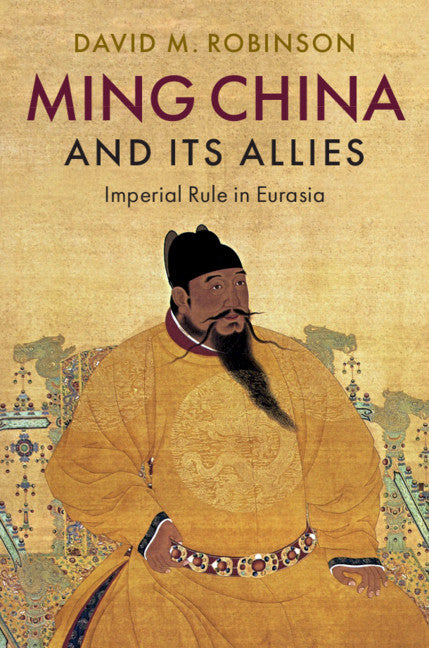Freshly Printed - allow 4 days lead
Couldn't load pickup availability
Ming China and its Allies
Imperial Rule in Eurasia
Explores the Ming Dynasty's foreign relations with neighboring sovereigns, placing China in a wider global context.
David M. Robinson (Author)
9781108489225, Cambridge University Press
Hardback, published 2 January 2020
258 pages, 2 maps
23.6 x 15.9 x 1.6 cm, 0.55 kg
'Robinson's new book breaks away from the old Ming-Mongol binaries prevalent in historical sources and historiography. this book makes significant scholarly contributions by telling a new story about Ming rulership and by opening up new possibilities in research on Eurasian connectivity and comparative empires.' Ying Zhang, China and Asia
On the eve of the early modern age, Ming emperors ruled around one-quarter of the globe's population, the majority of the world's largest urban centers, the biggest standing army on the planet, and the day's most affluent economy. Far from being isolated, the Ming court was the greatest center of political patronage in East Eurasia, likely the world. Although the Ming throne might trumpet its superiority, it understood its need for allegiance from ruling elites in neighbouring regions. In this major new study, David M. Robinson explores Ming emperors' relations with the single most important category of Eurasian nobles: descendants of Ghengis Khan and their Mongol supporters. Exploring the international dimensions of Chinese rule, this revisionist but accessible account shows that even rulers such as the Ming emperor needed allies and were willing to pay for them.
Introduction, 1. Zhu Di's march to power in a Chinggisid world
2. Search for control
3. Mongol nobles at the Ming court
4. Tumu crisis in a Eurasion context: struggle for the Chinggisid mantle
5. Tumu crisis (II) allies and commensurability
Conclusion.
Subject Areas: Asian history [HBJF], General & world history [HBG]


